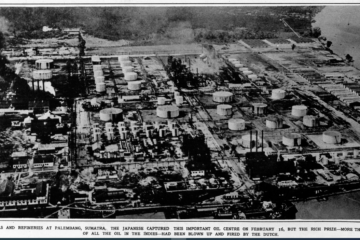By: Yvette Paulusz
Introduction
The Dutch Burghers descend from VOC personnel who were employed by the Company to manage their trading operations, and administer the territory which the Company had acquired in Ceylon (Sri Lanka). Research into the occupations of the Founders of families during VOC times indicates that very few Founders were employed independently of the VOC. Generally, Dutch Burghers are descended from men who held official positions in the Company. Sixty-seven Founders of families in a list of families (A-G) were investigated: only one, the Founder of the Ferdinands family, was described as ‘Vryburger or ‘burger’, i.e. a person not employed by the Company. Examples of some of the occupations of the Founders are: boekhouder, administrateur, Krankbezoeker (comforter of the sick) Onder-koopman, Koopman, Advocaat Fiscaal, Chirurgyn (Surgeon), Secretary of the Land Court, and Chief (e.g., Chief of Mannar). A few Founders are described as ‘Resident’, i.e., the administrative Head of a district. There are also Dutch Burghers who are descended from VOC military and naval officers.
The VOC was a highly multi-national company. Its employees included: Dutch Flemish, Germans, French, Swiss, and at least one British employee, a Channel Islander, Captain Jean Brohier, from the Island of Jersey. Both Protestants and Catholics were employed by the Company.
On February 16th, 1796, the British East India Company gained control of the former VOC territory in Ceylon. It was agreed between the British and the VOC authorities, that the VOC would resume control of the territory, once Napoleon had been defeated. However, the VOC was dissolved in 1799. The British Government eventually took over the whole Island. English became the official language of Ceylon.
The British assimilated the Dutch Burghers, culturally and linguistically. However, the Dutch Burghers maintained some of their traditions, especially in cuisine, e.g., they consume breudher – a kind of Dutch cake – on festive occasions, and invented an elaborate rice dish, called ‘lamprais’ (pronounced lum-pry-yers), also consumed on special occasions.
On February 4th, 1948, Ceylon became independent. In 1956, a Government which strongly favoured the Sinhala Buddhist majority gained power, and imposed the Official Language Act (1956), also known as the Sinhala Only Act, which made Sinhala the sole, official language of the country. This severely disadvantaged the Dutch Burghers. Other discriminatory policies included the nationalisation of the schools (1961), including the Christian schools. A few schools were able to remain independent. The Dutch Reformed Church school, Lindsay Girls’ School, was taken over by the Government in January, 1961.
The Dutch Burghers are Christians. These discriminatory measures affected many aspects of their everyday life, struck at their Christian faith, and forced them to emigrate, mainly to Australia, but also to Britain and the United States. In Australia, they have established a vibrant community. They maintain contact with each other through school associations, and other organisations, which hold regular lunches, parties, and dances at Christmas.
My selection of the people listed below is based on the following criteria:
- Dutch Burgher ethnicity
- High achiever
- Very successful career in Australia
Bryan Claessen – Cricketer, lawyer, poet
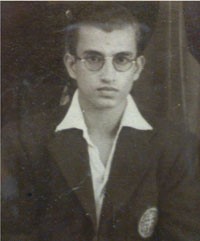
Elton Bryan Claessen was born in 1935 in Colombo, Ceylon (now Sri Lanka), into a Dutch Burgher family. He attended Wesley College, Colombo, where he became one of the school’s most celebrated all-round cricketers. In 1953, he captained Wesley’s 1st XI cricket team, an unbeaten side fondly remembered as one of the school’s “wonder teams.” That same year, at just 18, Bryan was selected to play for All-Ceylon against the touring Australian team led by Lindsay Hassett, an early highlight in his remarkable sporting career.
A stylish and aggressive batsman, Bryan was admired for his wide array of strokes and impeccable timing. He was also a wily leg-spin bowler, known for his sharp “googly” and his ability to outwit batsmen. Equally brilliant in the field, Bryan became a cricketing legend among his peers and is remembered as one of Wesley’s greatest captains, owing much of his success to his dedicated coach, Alban V. Fernando.
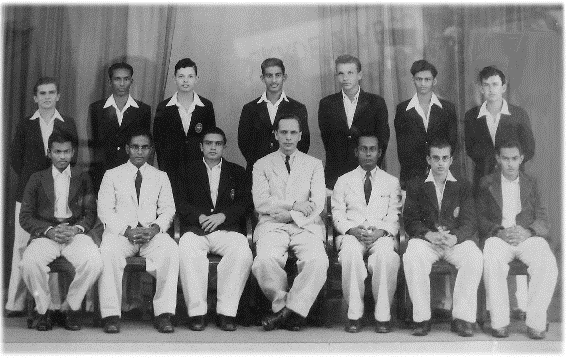
L-R Seated: Musafer (Wicket Keeper), A.V. Fernando (Coach) Radley Claessen (Captain), C.J. Oorloff (Principal), Mr JLF De Mel (Games Master), Bryan Claessen, Ansa Fuard. (Samsudeen – he and Bryan Claessen played for Sri Lanka while in College – is missing from this photo)
In 1957, Bryan migrated to Australia, part of a wave of Dutch Burgher migration following Ceylon’s independence. Settling first in Perth and later in Adelaide, South Australia, he continued his deep involvement in cricket as a player, coach, and mentor, earning several cricketing awards. His passion and leadership culminated in his election as the first Sri Lankan to become President of South Australia’s District Cricket Club, a landmark achievement for the Dutch Burgher community.
Outside sport, Bryan built a successful professional career in law. He worked as a prosecutor in family law in South Australia and, by the time of his retirement in March 1988, was heading the division responsible for enforcing family support orders.
Bryan was also a man of many talents and passions. He was an accomplished poet and calligrapher, known for letters written with elegance and sincerity, often weaving poetry into his correspondence. He remained fiercely loyal to Wesley College, contributing generously to its initiatives and maintaining lifelong friendships with teammates, schoolmates, and teachers.
Bryan and his wife Carol later retired to Tailem Bend, a picturesque town on the Murray River in South Australia, where they embraced rural life and became active members of the local community. They raised five children and enjoyed a rich family life surrounded by grandchildren. Bryan’s warmth, generosity, and good humour made him a beloved figure both within his family and in the wider community.
Bryan Claessen passed away on 16 March 2010 in Australia, leaving behind a legacy of sporting excellence, professional dedication, and creative expression. His life reflects the lasting contributions of the Dutch Burgher community to Australian society, blending sporting achievement, professional distinction, and cultural richness.
Source: Sunday Times
Professor Beverley Vollenhoven AM
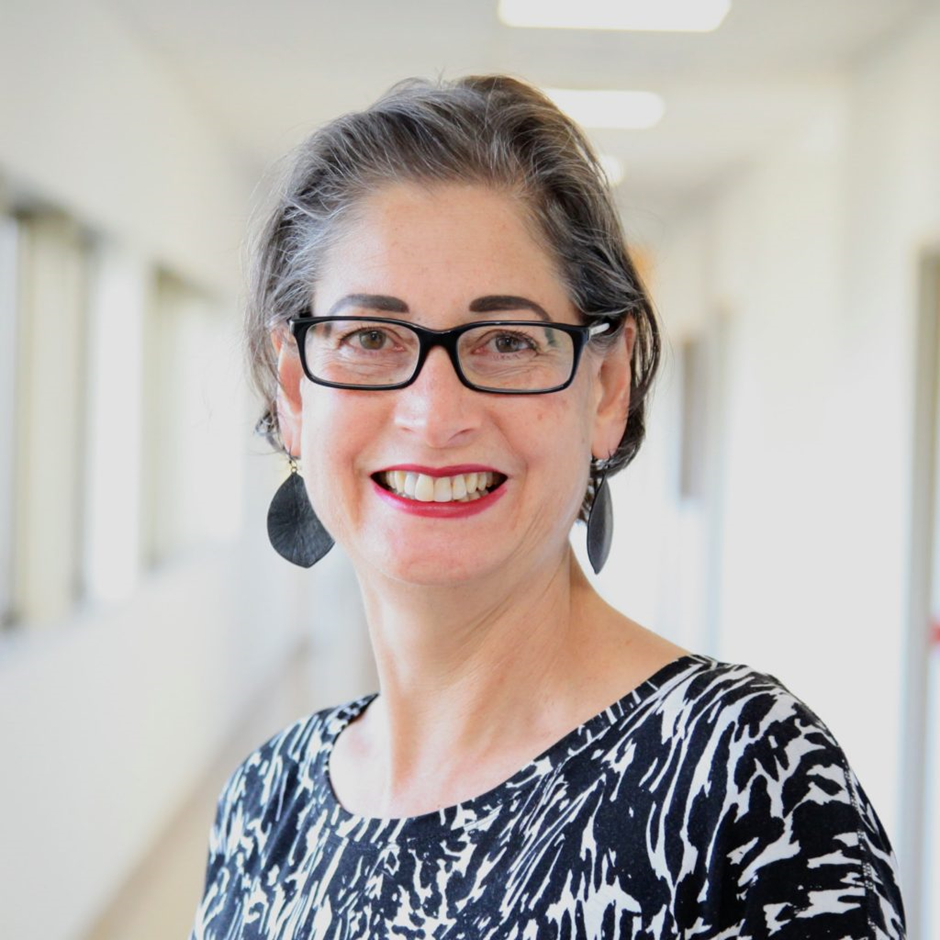
Reproductive endocrinologist, researcher, academic
Born 1961, Colombo, Ceylon. Dutch Burgher background (Vollenhoven and Buultjens families).
Migrated to Australia and studied medicine at Monash University (MBBS 1984, PhD 1994). Now one of Australia’s leading experts in reproductive medicine and infertility. Carl Wood Professor and Head of the Department of Obstetrics and Gynaecology at Monash University, Director of Gynaecology and Research at Monash Health, and senior clinician at Monash IVF.
Her clinical and research focus includes IVF success, fertility preservation, fibroids, early menopause, and adolescent gynaecology. In 2023, awarded a $2.9 million Medical Research Future Fund grant to apply genomics and AI in IVF treatment. Widely published and a passionate advocate for women in science and medicine.
Inducted into the Victorian Honour Roll of Women in 2019. Appointed Member of the Order of Australia (AM) in 2021.
Married with one daughter. Continues to play a leadership role in women’s health in Australia.
Dr Hugh Bartholomeusz OAM RFD MBBS FRACS (Plast)

Plastic surgeon, military leader, community contributor
Inspired by a teacher during his early schooling and motivated by a desire to care for others, Hugh embarked on a career in medicine that would become internationally recognised. He specialised in plastic and reconstructive surgery, with a focus on areas including breast, facial, aesthetic, and skin cancer (melanoma) surgery. He was awarded a Fellowship of the Royal Australasian College of Surgeons and became a leading figure in day surgery development in Australia, founding the Tri Rhosen Day Hospital in 1996.
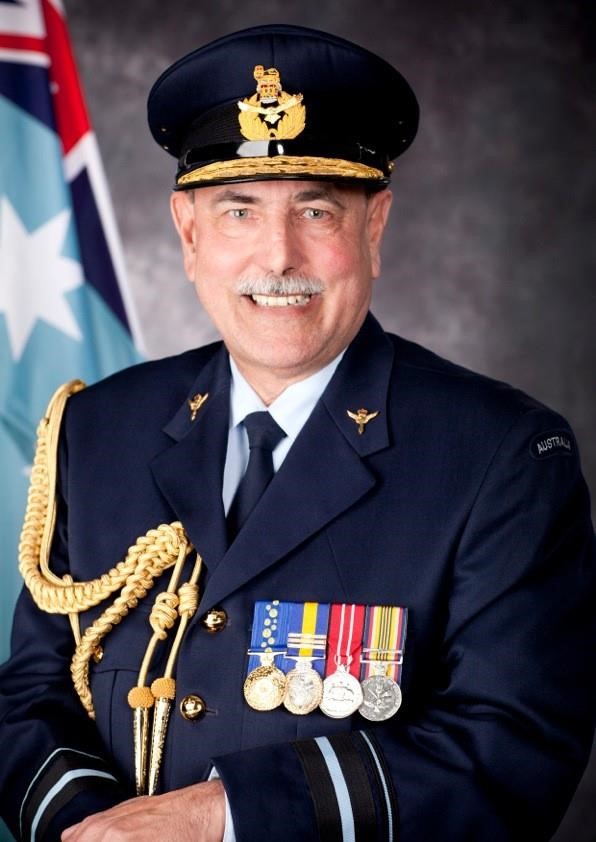
Alongside his medical career, Dr Bartholomeusz served with distinction in the Royal Australian Air Force. Rising to the rank of Air Vice-Marshal, he served as Surgeon-General of the Australian Defence Force Reserves and became Patron of the Australasian Military Medicine Association. His service is particularly notable within the Dutch Burgher community, where military careers are rare in contrast to traditional professions such as law, medicine, and the arts. He was actively involved with the Australian Air Force Cadets and held leadership roles in international air cadet organisations.
He was President of the Australian Society of Plastic Surgeons and Chair of the Australian Day Surgery Council. At the international level, he represented Australia on the International Association of Ambulatory Surgery and served as World President of the International Air Cadet Exchange Association.
His dedication to the broader community is also evident. He was a founding chairman of West Moreton Anglican College, helped establish the University of Queensland’s Ipswich campus, and chaired numerous medical and heritage committees in the Ipswich region. He also led restoration efforts for St Paul’s Anglican Church and remained a strong supporter of youth, education, and medical training.
Dr Bartholomeusz received the Order of Australia Medal in 2010 for his service to medicine and the military. Now retired, he and his wife Helga live in Queenstown, New Zealand. He remains an inspiring example of the contribution that Dutch Burgher migrants and their descendants have made to Australian society.
Dennis Bartholomeusz
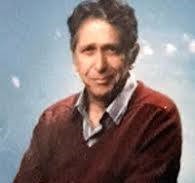
Dr Dennis Stephen Bartholomeusz, an acknowledged world authority on Shakespearean studies (90) passed away peacefully surrounded by his family on March 25 in Melbourne.
Dennis was born and raised in Sri Lanka, attended St Joseph’s College Colombo, and graduated with a Bachelor of Arts (Honours) in English Literature from the University of Ceylon. He established the English Department at Aquinas University College, in Colombo in 1954, where he was one of the first members of the English Department to be a literature specialist. He directed a number of plays, including ‘The Teahouse of the August Moon’, with Hilary de Alwis, a hilarious Japanese-American clown, ‘Moliere’s Tartuffe’ the two absurd hypocrites played by Percy Colin-Thomé and Brian Rutnam, the tragic beauty of Reneira Campbell’s Joan of Arc in Jean Anouilh’s ‘The Lark’, all box office successes at the Lionel Wendt Theatre in Colombo. In 1966, he graduated with a doctorate in English Literature from the University of London.
As a Reader of English at Monash University’s English Department, he analysed how Shakespearean plays had been performed down the ages, resolving the age-old conflict between academics and actors over what Shakespearean texts represent. By looking at the history of Shakespeare on stage, he explored the link between text and presentation. He believed that a historical study of a play in performance, can unfold many complex cultural significances, while extending our understanding of the text, and enriching our awareness of its form and meaning.
He injected his methods into directing performances by students and staff in the Alexander Theatre: King Lear in 1966, and Coriolanus in 1973. It seems paradoxical that King Lear considered by many literary critics to be Shakespeare’s “greatest achievement”, should have a reputation for being impossible to stage. But the first ever Australian production of King Lear was directed by Dennis and performed on stage at Monash University, as part of the third year English course on Shakespearean drama. His lectures were always insightful, and thought-provoking, encouraging students to make their own discoveries, and make recommendations for their own productions.
He committed his analysis of the evidence on Macbeth to the book Macbeth and the Players (Cambridge University Press, 1969); which included interpretations by Sir Arthur John Gielgud, Laurence Olivier, Samuel Richardson and Eric Porter. Confining the study to a single play, he brought the interpretations into focus, still further sharpened by concentrating on the two principal characters, Macbeth and Lady M. The book brought him wide reputation, including a Fellowship at the Folger Shakespeare Institute in Washington DC, and a visiting Associate Professorship at the University of Illinois in 1972.
He reminds us that ‘Poetry is the secret life of each and all the arts’(Jacques Maritain), and that Shakespeare’s plays contain some of the most expressive poetry ever written. His book on the The Winter’s Tale in performance was not only a technical and scholarly affair, but a creative act.
Dennis retired from teaching at Monash University in 1996, but there was no diminution in his research or academic activity. India’s Shakespeare co-written with Poonam Trivedi was published in 2005, presenting a collection of essays on how Shakespeare was read, taught, translated, and performed into the cultural fabric of India.
Profound and astoundingly brilliant, his goodness and compassion radiated a quiet influence on the people around him. Inspiringly, he remained devoted to English literature to the end.
Source: eLanka https://www.elanka.com.au ›
Aubrey Collette
Outspoken in his political satire, Aubrey Collette was a staunch critic of Sri Lanka’s political scene and was a formative cartoonist and critic within the golden age of Sri Lankan journalism. His politically forward cartoons—the very same he was lauded and then eventually scorned for, culminated in political exile in 1961. Amidst increasing emigration of the Burgher minority due to restrictive government policies, and an increasingly hostile political climate in the country, Collette sketches a melancholic piece in an ode to his forced exile in “A Cartoonist’s Farewell”, where he joins a queue of Burgher people leaving the country.
To glimpse Aubrey Collette’s famed caricature “A Cartoonist’s Farewell” and his other politically cutting cartoons, go through ARTRA’s Comics & Caricatures Edition which features over 60 caricatures and cartoon drawings collectively by Gihan de Chickera, Bevis Bawa, and Aubrey Collette published and exhibited from 1946 to September 2023.
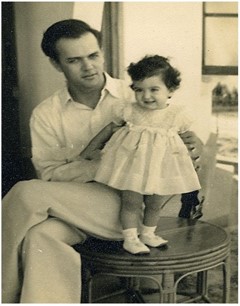
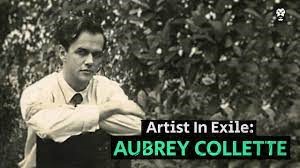
Professor David de Kretser
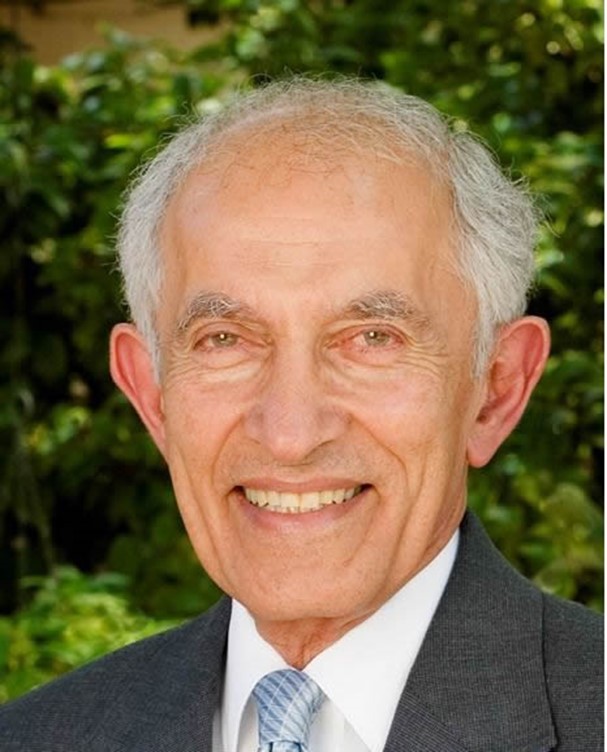
De Kretser is an ex-Governor of Victoria, AC, FAA, FTSE, FAHMS (born 27 April 1939) is an Australian medical researcher who served as the 27th Governor of Victoria, from 2006 to 2011….He studied at Camberwell Grammar School, Melbourne (where he is currently a member of the school board), received his Bachelors of Medicine and Surgery degrees from the University of Melbourne in 1962, and his Doctor of Medicine degree from Monash University in 1969. De Kretser founded a medical research group, Andrology Australia. He was elected Fellow of the Australian Academy of Science (FAA) in 1996,[3] Fellow of the Australian Academy of Technology and Engineering (FTSE)[4] and Fellow of the Australian Academy of Health and Medical Sciences (FAHMS).
[Source: https://en.wikipedia.org/wiki/David_de_Kretser [Abridged]
Michelle de Kretser

Michelle de Kretser is an Australian novelist who was born in Sri Lanka, and moved to Australia in 1972 when she was 14. Born: 11 November 1957, Colombo, Sri Lanka, age 66 years.
De Kretser was educated at Methodist College, Colombo,[2] in Melbourne at Elwood College, and in Paris.
She worked as an editor for a travel guides company Lonely Planet, and while on a sabbatical in 1999, wrote and published her first novel, The Rose Grower. Her second novel, published in 2003, The Hamilton Case was the winner of the Tasmania Pacific Prize, the Encore Award (UK) and the Commonwealth Writers Prize (Southeast Asia and Pacific). Her third novel, The Lost Dog, was published in 2007. It was one of 13 books on the long list for the 2008 Man Booker Prize for fiction. From 1989 to 1992 she was a founding editor of the Australian Women’s Book Review. Her fourth novel, Questions of Travel, won several awards, including the 2013 Miles Franklin Award, the Australian Literature Society Gold Medal (ALS Gold Medal), and the 2013 Prime Minister’s Literary Awards for fiction. It was also shortlisted for the 2014 Dublin Impac Literary Award. Her 2017 novel, The Life to Come, was shortlisted for the 2018 Stella Prize, and won both the Miles Franklin Award and the Christina Stead Prize for Fiction. This is the third time Michelle de Kretser has won this prize and equals Peter Carey‘s record of wins.[3]
Awards
- 2004 – Encore Prize for The Hamilton Case
- 2004 – Commonwealth Writers’ Prize, South-East Asia and the Pacific for The Hamilton Case
- 2005 – Tasmania Pacific Award for The Hamilton Case
- 2007 – Liberatur Award for The Hamilton Case
- 2008 – New South Wales Premier’s Literary Awards – Christina Stead Prize for fiction and Book of the Year for The Lost Dog
- 2008 – ALS Gold Medal for The Lost Dog
- 2013 – Miles Franklin Award for Questions of Travel
- 2013 – ALS Gold Medal for Questions of Travel
- 2013 – Prime Minister’s Literary Awards Fiction Prize for Questions of Travel
- 2013 – Western Australian Premier’s Book Awards Fiction Prize and Premier’s Prize for Questions of Travel
- 2014 – New South Wales Premier’s Literary Awards – Christina Stead Prize for fiction and Book of the Year for Questions of Travel
- 2018 – Miles Franklin Award for The Life to Come
- 2019 – New South Wales Premier’s Literary Awards – Christina Stead Prize for fiction for The Life to Come[4]
- 2023 – Folio Prize for fiction for Scary Monsters[5]
Works
- The Rose Grower (1999)
- The Hamilton Case (2003)
- The Lost Dog (2007)
- Questions of Travel (2012)
- Springtime (2014)
- The Life to Come (2017)
- On Shirley Hazzard (2019)
- Scary Monsters (2021)
Source: Michelle de Kretser Australian novelist
Alan De Niese
De Niese, Alan born Colombo, 9 August, 1950. Educated at St. Peter’s College, Colombo, is an artist and singer, holds a Bachelor of Business degree and is a Fellow of the Australian Insurance Institute. He followed in the footsteps of his grandfather, George de Niese and uncle, Terry de Niese, painting the portrait of a St. Peter’s College Rector, Rev. Fr. Joe. Wickramasinghe. The three generations of portrait painters’ works hang on the walls of the College Hall. He also painted the portrait of Rector, Rev. Fr. Claver Perera, which is held in his own private collection. Alan immigrated to Melbourne, Australia, on 8 April, 1972. Within days of his arrival he obtained employment by Colonial Mutual Life Assurance Society Limited where, in due course, he progressed to positions of responsibility. In 1984 he moved to a senior position in Adriatic Life Limited.
In 1987 he obtained a Bachelor’s degree in business and became a Fellow of the Australian Insurance Institute. He continues to pursue his art and music endeavours. He has held the position of cantor with the Julian Singers at St. Francis Church, Melbourne City and is a guest cantor at many churches throughout Melbourne. His bass baritone voice contributed to the Melbourne Chorale, the Victoria Chorale and Heidelberg Choral Society. He was a core member of the de Niese Family Choir. He is a radio presenter of Wednesday Night at the Opera for 3MBS 103.5 FM and Great Voices for 3CR 855 AM.
Danielle de Niese
The daughter of Chris & Beverly de Niese, born in Melbourne, on April 11, 1979. Her father, who is in banking, has Dutch roots and her mother, the manager of the American branch of a Swiss vitamin company, has some Scottish ancestry. They both left Sri Lanka as teenagers and moved to Australia.
In 1989, at the age of 9, Danielle became the youngest ever winner of the Australian TV program ‘Young Talent Time’.
In 1990, her family moved to Los Angeles, where she appeared frequently on a weekly arts showcase for teenagers, ‘LA Kids’ for which she won an ‘Emmy Award’, at the age of 16. She was trained in dance and piano, as well as music at the famous Colburn School in Los Angeles, before going to New York in 1997 to attend the Mannes School for Music. She made her professional operatic debut at the age of 15 with the Los Angeles Opera. At 18 she became the youngest ever to enter the Metropolitan Opera’s Lindemann Young Arts Development Program. A year later, aged 19, she made her house debut as Barbarina in a new Jonathan Millet Production of ‘Le nozze di Figaro’. Soon after her Met debut came important operatic debuts with the Netherlands Opera, Saito Kinen Festival and the Paris Opera. She has enjoyed operatic success on the stages of Paris Opera, Zurich Opera, Netherlands Opera, San Francisco Opera and Lyric Opera of Chicago. She married Gus Christie, Chairman Glyndebourne Festival Opera, on December 19, 2009, in St Bartholomew-the-Great, London. Since her marriage, she has lived in Glyndebourne in Sussex, England. (Bach Cantata Website)

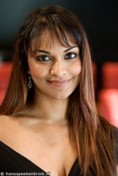

Micaela Drieberg-Cooper
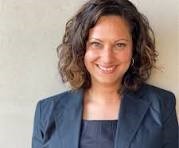
She was born Melbourne, Australia, February 23, 1979 (twin sister to Bianca Drieberg). Daughter of Christopher Drieberg and Gillian Harris. After completing a Bachelor of Health Science and Master of Health Promotion, she entered the health sector, managing a drug prevention program working with young people and went on to work with hospitals, general practitioners and non-government organizations before being sought as an Adviser to a former Victorian Health Minister. At the age of 29, she was elected as a Councillor in the City of Monash, a city with a population of over 200,000 people, where almost forty percent of its residents were born overseas.
She was unanimously elected as Mayor during her second term with the City of Monash, becoming the first female mayor of Sri Lankan descent to be elected in Australia. She served as Mayor in 2012/2013 before retiring from the role in 2016.
She has always been passionate about how gender and where people live, work, play and study can influence their lives. She has lectured and coordinated public health and urban planning subjects for 15 years with numerous universities, including Monash University as a Teaching Associate.
In 2011 she established a Consultancy – 3Hills – through which she supports local government and health services with various work, including planning, professional development, facilitation and community engagement. Inspired by 2020 events, she has recently returned to the public health coal face and commenced a new role as Director of Strategy & Development with the Victorian Healthcare Association – the peak body for public hospital and health services in Victoria.
In addition to this she is on the Board of Directors for Connect Health & Community, a not-for-profit community health service, helping residents in Melbourne’s Bayside and Glen Eira areas. She continues to live in the City of Monash with her husband Te Hira Cooper and their two sons, Anderson and Regan. (Contributed by Valleri Blake)
Rupert Ferdinands

A blazing tennis star,Rupert Ferdinands— well known product of St. Thomas’ College, Mt. Lavinia and former Head Prefect of the School, a B.Sc. (Hons) graduate, Sri Lanka Davis Cup player and Australian qualified tennis coach (Level 3). Rupert first won the Sri Lanka National Junior Under 16 Singles Title as a 12 year old, and continued to win the title till 15 years old when he won the National Junior Under 19 Singles title whilst still eligible to play in the U16s, and dominated the U19 title for the next 4 years.
He was selected in Ceylon’s first ever Davis Cup team as a 16 year old school boy, and thereafter played in almost every Davis Cup tie for Ceylon until migration to Australia in 1972. Ranked No. 1 in Ceylon in 1957, Rupert continued to be ranked No. 1 for over a decade. In 1957, 1963, 1969 and 1970, he won the Ceylon National Singles title, also winning 4 National Mens Double and 5 National Mixed Doubles titles! In 1957 and 1970, he won the National Triple Crown title at one and the same tournament. Notable wins in his career were against Japan’s No. 3, India’s A and Amritharaj and Premjit Lal, and also England’s Michael Davies as a junior of the same age and who subsequently became England’s No. 1 player, Davis Cup player and ITF stalwart. Had match point against Canada’s No. 1 player Don Fontana, and set point against India’s Ramanathan Krishnan and Ham Richardson who was ranked within the top 5 players in America at the time.
On arrival in Australia in 1972, Rupert served as a apprentice tennis coach, and a year later he had no difficulty at all in qualifying as a Level 2 coach in 1973, and subsequently being accredited as a Level 3 coach. In 1975, Rupert was awarded the General Coaches Education Certificate by the Department of Youth, Sport and Education of Victoria, Australia. Rupert was a Member of the Tennis Coaches
Victoria (TCAV) Board of Management for over 15 years. During this time, he acted as Secretary of the TCAV during the temporary absence of the Secretary and was also its Vice President at one time. He was invited to speak at National Tennis Coaches Seminars in Australia, and wrote several articles on various aspects of coaching that appeared in Australia’s TENNIS Magazine from 1985-1989.
In 1989, Rupert was appointed to a 5-man National Technical Committee for standardizing stroke techniques for teaching purposes for tennis coaches around Australia under the guidance of the National Director of Coaching. In the 1990s, he was sponsored by the Australian Government and the International Tennis Federation (ITF) on two separate occasions to proceed to Sri Lanka and conduct training courses for tennis coaches based on the Australian system.
Rupert’s greatest contribution to the TCAV was undoubtedly his dedication to managing the TCAV Training School for tennis Coaches for over 15 years as Manager and Chairman of its Examination Panel. During this time, his Training School committee introduced several improvements that led to high standards in the teaching of theory and practical components. This, of course, was in addition to his normal 9-5 daytime job as Projects Manager at Standards Australia specialising in the medical and dental areas, and his own private coaching at several local clubs. Time for family life was always at a premium!
In 2008, Rupert was honoured as a National Sporting Hero of Sri Lanka by the Ministry of Sports, Sri Lanka for his achievements in tennis both in Sri Lanka and abroad. On 28th November 2010, because of his pro-active attitude and programs over the years, enthusiasm and dedication to the tennis coaching profession, genuine hard work, a lifetime contribution to the game of tennis, and been instrumental in the success of many young tennis players and coaches in Victoria, Rupert was inducted into the Hall Of Fame of the Tennis Coaches – Victoria at an Awards Night held at Kooyong Lawn Tennis Club. A very prestigious award and a rare honour indeed!
Rupert spends his retirement in Rowville, Melbourne, with his wife Tammy (nee Wambeek) in a spacious home with its own flood lit tennis court, where he still does a little coaching. The sport truly runs in his veins and life would not be the same for him if he did not play a game or two every day!
Source: STC Centenary Group
Dr Aubrey William Jansz
Aubrey Jansz MBBS (Cey) 1948, FTRCS 1959, born 8 November 1926, Colombo, Ceylon, Died 19 October 2011, Melbourne. He initially attended Royal College, completing his secondary schooling at Alexandra College from where he won the prestigious Rustomjee Jamshediji Jeejeeboy Scholarship to study Medicine at Colombo University, graduating in 1948. Having completed Internship in Sri Lanka, he was then appointed Lecturer in Physiology at the University of Colombo and it was here that he was stimulated and encouraged to pursue surgery.
Having obtained his First Part FRCS, he then travelled to UK to study and sit the Second Part FRCS, working at The Seaman’s Hospital, Croydon General and Great Ormond Street Hospitals. His son, Martin, took Aubrey to visit The Seaman’s Hospital in Greenwich some years ago, as he had a great fondness for it. Evidently he had been able to see the ‘Cutty Sark’ from his window and, more importantly, it was here that he learned so much from surgical mentors of many nationalities that he was able to be a ‘good surgeon’. From earliest childhood, he had indicated that he wanted to help people and be challenged; hence his becoming a doctor and subsequently a surgeon was no surprise.
In 1962, he, his wife Patricia and daughter Andrea migrated to Melbourne. His first position in Melbourne was at the Prince Henry’s Hospital where he took up a post as an Honorary Clinical Assistant Surgeon to the Outpatient’s Department. This position kept him in touch with clinical surgery, but there were no operating rights as was the practice of that era. It was here that he met Ken Brearley (FRACS), the Acting Honorary Surgeon to Outpatients. At about the same time in 1963, he joined three other doctors in a practice in Melville Road, Pascoe Vale South; it was fairly common then for surgeons to work as ‘GP-surgeons’ in a general practice. In 1964 he was lured ‘across the Yarra’ by Ken, to take up a position at Preston and Northcote Community Hospital (PANCH) where the outpatient numbers there were building rapidly and he was appointed as a Clinical Assistant Surgeon to Ken’s Unit.
In those days the work was honorary, but after some years payment was introduced, courtesy of the Whitlam Government. And so it was that he commenced his long and rewarding career in the northern suburbs of Melbourne. Initially, whilst still at the Melville Road GP practice, he was operating at Sacred Heart, Vaucluse and PANCH hospitals, but soon after commencing at PANCH, he was appointed as an Assistant Surgeon in Ken’s Unit which gave him operating rights and responsibilities.
By 1975, his surgical practice was secure and he ceased GP work, however the legacy of his time in general practice lived on. In 1986, following the untimely passing of John Fethers, he was appointed Head of the Surgical 3 Unit where he became interested in Upper GI endoscopy and evidently introduced the first gastroscope to PANCH. His surgery was of a high standard and the care of his patients was exemplary.
He possessed a quiet, pleasant and respectful personality which rendered him most popular with staff, colleagues and patients, added to which he also had a well-developed sense of humour. Ken remembers being told by Aubrey that he had once operated on a patient, a young girl with peritonitis from a ruptured appendix. On receiving the account, probably in the order of $200 in those days, the girl’s father told him the fee was too high and refused to pay.
Aubrey then suggested he should pay whatever he felt his daughter’s life was worth; he duly received a cheque for $50! Inquisitiveness was perhaps something he inherited from his bookstore manager father. He delighted in books and found nothing more pleasant than spending half a day browsing around small bookshops in and around Melbourne, from where he would emerge with one or two extraordinary volumes. He later became PANCH Medical Librarian, a position he greatly enjoyed.
Palliative Care and philosophical matters of life and death were things that had always interested him, and he was greatly impressed and influenced by the inspirational Helen Kübler-Ross who had given a number of lectures in Melbourne. His inquiring mind and reading on a broad range of subjects resulted in his challenging, in all manner of ways, colleagues, students and family alike, urging them to solve puzzles and to question statements made by others.
This made him a great teacher for most of his life, combining common sense, humility and whimsy. In a way, the lessons were more about life and surgical attitudes than strict clinical material. Not surprisingly, he was held in high regard by all students attached to his Unit, as well as at St Vincent’s Hospital Clinical School where he continued to take ‘Lumps and Bumps’ sessions for a good many years after he retired from PANCH and active surgery in 1992.
One of the important hints he passed on was that: ‘It is important to buy two copies of any special book, so that when a volume is lent to a colleague, you are thus assured of retaining a copy when this ‘lent’ book inevitably fails to return!’ Another special attribute was the care and attention, surgical and emotional, that he gave to his patients at all times, both in the Public and Private sectors.
Years after retiring, his patients continue to ask after his health and comment on his interest in them as people, rather than them being ‘just another case.’ What greater legacy could one have? On one occasion he challenged his colleagues by enquiring: ‘How many of you have had occasion to visit your patient in their home?’ – his reason being – that to visit someone in their home really grounds the relationship and gives all kinds of insight into their lives.
He made a wonderful contribution to the surgical care of the northern suburbs of Melbourne and to the much broader education of his colleagues and medical students at PANCH. He was much loved, respected and is fondly remembered by all as a gentle, compassionate and giving man. Moreover, he was a devoted family man who would frequently tell us of the progress of his children, Andrea and Martin, who certainly lived up to all the expectations held by him and his loving wife of 56 years – Patricia. (Contributed by Ken Brearley, Plarr’s Lives of the Fellows)
Elmo Vivian Jansz

He was born on the 10th of March 1941 in Colombo. He had his entire schooling at St. Thomas’s College, Mount Lavinia. He holds an Honours Degree from the University of London in Mathematics and Physics and a Diploma in Electronic Engineering from CIT (Melbourne).
He is a Corporate Member of the Institute of Engineering and Technology (London) and a Corporate Member of the Institute of Engineers (Australia). In 1966 he won a French Government Scholarship to France where he worked on Semiconductor Optoelectronic devices for nearly two years. On returning to Sri Lanka he joined the Applied Physics Department of the Ceylon Institute of Scientific and Industrial Research (CISIR) as an Experimental Officer. In 1973 he immigrated to Australia and worked at LM Ericsson as an Engineer at their Broadmeadows plant. In 1979 he moved to Hobart and worked for TAFE (Tasmania) as the Head of the Electrical Engineering Department, a position he held for over 25 years. He counts a very large number of students in the Tasmanian Hydroelectric Commission, the ABC, Telstra and several other State and Private Organizations within Tasmania and inter-state. He has published a Text Book on Electronic Communications and also published several articles in Australian Electronic Magazines. He is a Ham Radio Operator with Call Sign VK7CJ. (Contributed)
Geoffrey Paul Jansz (Geoff)
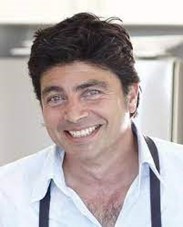
Geoff Jans B.Pharm (Syd), born 1960’s, Colombo, Ceylon. Immigrated to Sydney, Australia. 1984, graduated from Sydney University with a Bachelor of Pharmacy and for three years worked as a pharmacist. In 1987, he opened his own restaurant in Piction, New South Wales, where he began honing his ‘garden to table concept’. He came to prominence when afforded the opportunity of displaying his cooking talents on Australian daytime television (Channel 9) with a show that was highly successful. He continued his passion for knowing about, preparing and sharing food over the years by hosting TV shows and documentaries and contributing articles for books and magazines. He has written three books on the subject of food. He also runs a very successful cooking school and studio on his Bowral farm. He produces programs highlighting his very hands-on and professional approach to quality ingredients, equipment and cooking methods. (The Burghers of Ceylon Worldwide – Kelaart, 2007)
Neville Joseph Louis Jansz
Neville was born in 1923, Enjoyed a brilliant career at Royal College, Colombo. At University College, London, he obtained a First Class Honours in Physics, as an external student. In 1942, he joined the Ceylon Civil Service as a cadet and had an equally brilliant career later serving as Assistant Government Agent in several provincial areas (Badulla, Batticaloa, Kalmunai). Returning to Colombo in 1945 he was appointed to the Chief Secretary’s Office and served in Immigration and Defence. In 1948 he became an obvious choice in the newly created Ministry of Defence and External Affairs for the position of Assistant Chief Secretary (Defence). After a conference of the Economic Commission for Asia held in New South Wales, Australia, he was asked to spend a few weeks in the Australian Department of External Affairs, to observe their methods and procedures in handling diplomatic matters. In 1957, he went back to the Treasury and also served as Secretary of the Salaries Commission. In 1960 he was appointed Chairman of the National Sugar Corporation. In 1962, he retired from the Civil Service, under the language provisions. In 1969 whilst working for Nestles (Ceylon Nutritional Foods Ltd) the Government invited him to be their next High Commissioner in Australia, which he accepted. In 1970 with the change of Government in Ceylon, his three-year contract as High Commissioner was terminated with a three-line-telegram. He then sought permanent residence in Australia, which was duly granted. He obtained employment as a middle level clerk in the Aboriginal Affairs Department and eventually retired in 1982 holding the position as First Assistant Secretary in charge of Operations. (The Burghers of Ceylon Worldwide – Kelaart, 2007)
William Rowland Joseph (Bill)
Bill was born 1928, educated at Carey Baptist College, Colombo. 1942-1945, war service with the Royal Navy, as an ordinary seaman. 1952, immigrated to Melbourne, Australia. 1952, first employed at the Commonwealth Aircraft Corporation, Melbourne, as a storeman. 1953, his next venture was as a dance instructor at the Arthur Murray School of Dancing, where he won the coveted Australian Ballroom Dancing Championship. 1960 – 1980, premier entrepreneur in the entertainment industry, Manager and Owner of ‘Premier Artists’ – a company created to oversee the career of many young stars, who went on to make a name for themselves. They included Billy Thorpe, John Farnham, Russell Morris, the Bee Gees and Olivia Newton John. In 1968, he was instrumental in founding the first national booking agency ‘AMBO’ (Australian Management and Booking Organisation), a company that managed leading bands from the 1960’s onwards. During the 1950’s to the early 1980’s, he managed twenty rock and disco venues around Melbourne and country Victoria. In 1985, ill health forced his retirement from the industry. (The Burghers of Ceylon Worldwide – Kelaart, 2007)
Sean Trevor La Brooy
Born 1929. Education – S.Thomas’ College, Gurutalawa. Immigrated to Townsville, Brisbane. 1971-1985 moved to the Northern Territory having joined the Federal Government’s Department of Aboriginal Affairs. In 1985 appointed a Justice of the Peace for the Northern Territory. He had a wide and varied knowledge of the Aboriginal Community, and at one time it was said that he knew over three thousand Aboriginals by name, in Queensland and the Northern Territory. His literary efforts include the publication of two articles in the Australian Medical Journal, which were done in conjunction with an eminent Radiologist in Darwin. He also wrote a Paper on the ‘Behavioural Patterns and Juvenile Delinquency of the Groote Eylandt Aborigines’. In 1988, moved to Darwin on retirement and has authored several books – a semi-autobiographical account of his adventures, both in the jungles of Ceylon and the Australian outback. He has also authored two books of poems.
William Henry de Boer Leembruggen
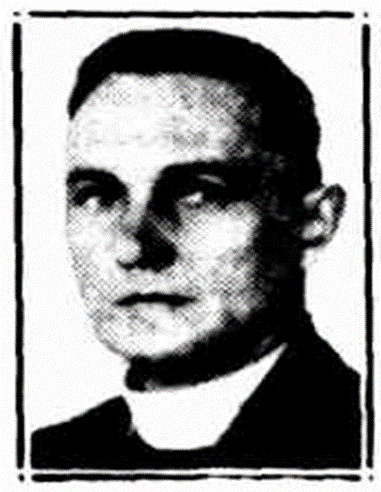
He was born 22 Jan 1886 in Colombo, Ceylon. He died 1957. One of the early settlers from Ceylon who arrived in 1904, at the age of 18. Years, starting life working on a farm in Queensland. About 1911, he graduated in Divinity from Brisbane University, and held many charges as a Minister of the Wesleyan Mission. Several years of his missionary life was spent in the Solomon Islands, which then had a sinister reputation, left three sons when he died.
Rev. Leembruggen’s name appears in the Victorian Govt Gazette, No: 35, Saturday, 29th January 1938, p. 538, as a Minister of Religion, in the denomination of the Methodist Church of Australasia, registered to practise in Victoria on 31/10/1937.
Victoria Gazette, Jan 29th, 1938, p. 538.
Edward Ludovici
Born 1915. Passed out as a Solicitor and worked in the Law Firm of F.J & G. de Saram, before serving as a Private Secretary to several Supreme Court Judges in Ceylon. He then was appointed as a Deputy Registrar of the Supreme Court. In 1949 he immigrated with his family to Perth. After five weeks of working as a clerk at Elders-Excell in Perth, he obtained employment as a Conveyancing Clerk in the Solicitor General’s Office. He was subsequently admitted to the Bar in Perth and practiced as a Solicitor in the Crown Law Department, where he worked as a Parliamentary Draughtsman. On a brief visit to England, he worked with a Solicitor friend. On returning to Australia he obtained the position of Assistant Parliamentary Draughtsman in Adelaide. Ten years later, in 1959, he was appointed Parliamentary Draughtsman of South Australia, which designation was changed to Parliamentary Counsel. On his retirement in 1972, he practiced at the Adelaide Bar until 1982. He is remembered for his ‘magnus opus’: the Compilation of Statutes of South Australia.
Ursula Merle Modder
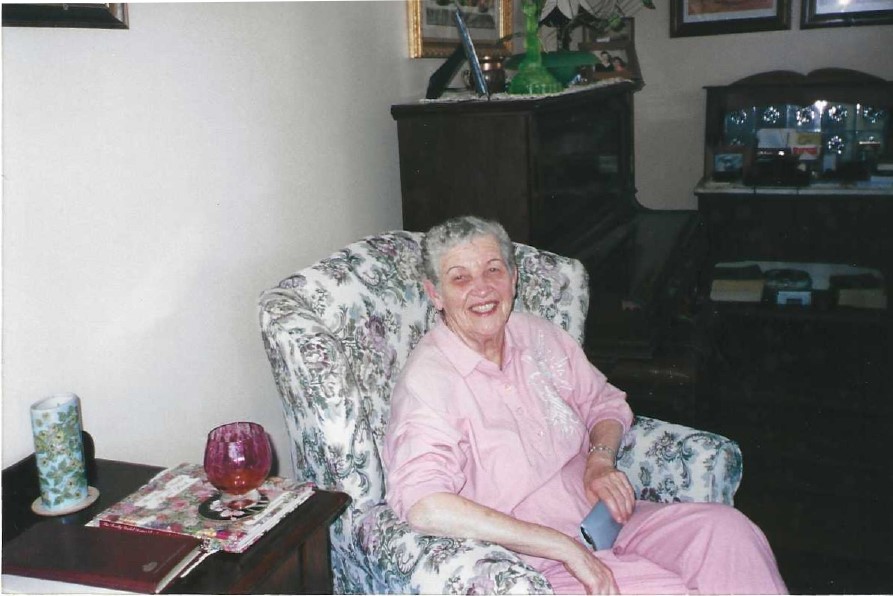
Ursula Modder OAM, born Negombo, Ceylon, 16 February 1923 died Brisbane, Australia, 15 October 2006. Educated at Newstead College, Negombo. Trained in the Froebel method of Kindergarten teaching. She then established with the help of her sisters, the “ Modder Private School “ for the toddlers of British expatriates in Colombo. At its peak the school had about 25 students, and was at the CCC clubhouse, at Maitland Crescent. She immigrated to Australia in 1959, where she secured a job with the Creche & Kindergarten Association.In1973 she helped establish the Queensland Department of Education’s Pre School division, and was the Deputy Director of that division at her retirement in 1987. She was awarded the OAM in 1990, and the citation read “ for public service and particularly to early childhood education. “ She was the daughter of Vyvil Ellis Stanford Modder & Ruth Salome Beven.
Dr. Bede Kenneth Muller
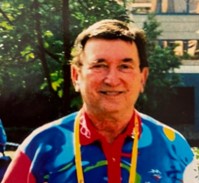
Born 10 October 1924 in Colombo, Ceylon. Educated at St Joseph’s College Colombo and University of Ceylon, He graduated with an MBBS in 1948. He later completed post-graduate studies in London and worked in medical practices in London, Nottingham and New York. He then returned to Sri Lanka in 1956 and worked at his father’s medical practice in Colombo and later at Dr Daniel’s medical practice in Colpetty, Colombo He was a passionate golfer who played regularly at the Royal Colombo Golf Club. In 1968 he won the club’s championship and later represented Sri Lanka in championships in India and Pakistan. He immigrated to Sydney in 1972 with his wife Thelma and three children Philip, Stephen and Leon. He worked in his own medical practice in Concord West for 40 years. He was a passionate medical practitioner who engaged in multiple engagements in Sydney including as a senior sports doctor for the Sydney Olympic Games in 2000.
Keith Leon Potger
Born Colombo in 1941. Immigrated to Melbourne, Australia with his parents and grandparents in 1948. Educated at Melbourne High School. He started out in the music business as a radio producer, then performed with the ‘Trinamics’ and the ‘Escorts’, which was a four-piece group, Keith Potger, Athol Guy, Ken Ray and Bob Turnbull. In 1962, with the change of one member (Bruce Woodley replaced Bob Turnbull), it became ‘The Seekers’, Judith Durham then joined the group as a replacement singer for Ken Ray. In 1968 ‘The Seekers’ disbanded and the members went their different ways. In 1969, Keith with business partner David Joseph, formed a new group ‘New Seekers’, they found instant success that rivalled even that of the original ‘Seekers’. In 1975, Keith, Athol Guy and Bruce Woodley with new lead singer Louise Wisseling got together again as ‘The Seekers’. They continued on but were hardly recognizable as the hit group of the 1960’s. In 1993 Judith Durham returned to the group for a sell-out 25th anniversary tour of Australia and New Zealand. In 2000 they waved the world goodbye on an international tour. Since then he has been forming solo concerts in Australia, the UK and United States.
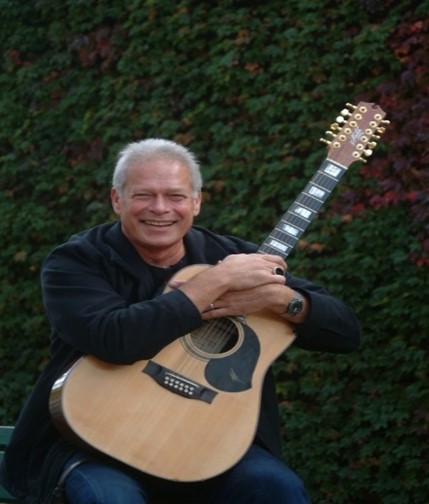

Cuthbert Russell Raymond
Raymond, Cuthbert Russell, OAM, born 1932, Colombo, Ceylon, died August 26, 2019, Karrakkata, West Australia. He was educated at St Aloysius College, Ratnapura and St Benedict’s College, Kotahena, Colombo, Ceylon. At St Aloysius College he shone at Athletics and was once champion for Uva Province Schools with the Pole Vault event he competed in. At St Benedict’s he represented the college in its Soccer Team. He also had a fine musical ear and voice which made him the life and soul of many parties. In 1974, he immigrated with his wife and family to Perth, West Australia. He was employed as sub-editor at the ‘West Australian’ newspaper and the Editor of ‘The Countryman’. He was actively involved with the Ethnic Communities Council of West Australia (ECCWA) on both State and National level. In January 1994 he was awarded the Order of Australia Medal (OAM) for services to the North Perth Migrant Resource Centre (NPMRC) and to the Media. His contribution to the NPMRC since its inception was impressive. Finally becoming its Chairman. In the 1990’s, under his Presidency, ECCWA had an annual turnover of over $5 million dollars and full-time and senior policy positions, focusing on issues relating to women, youth and family. He served on the Boards of many organisations, including some in Office Bearer capacity. Some of which are the Australia Day Council, Advocare, Umbrella Community Services, the West Australian Sri Lankan Association and on the Oz Concert Committee.
David Aldo Sansoni
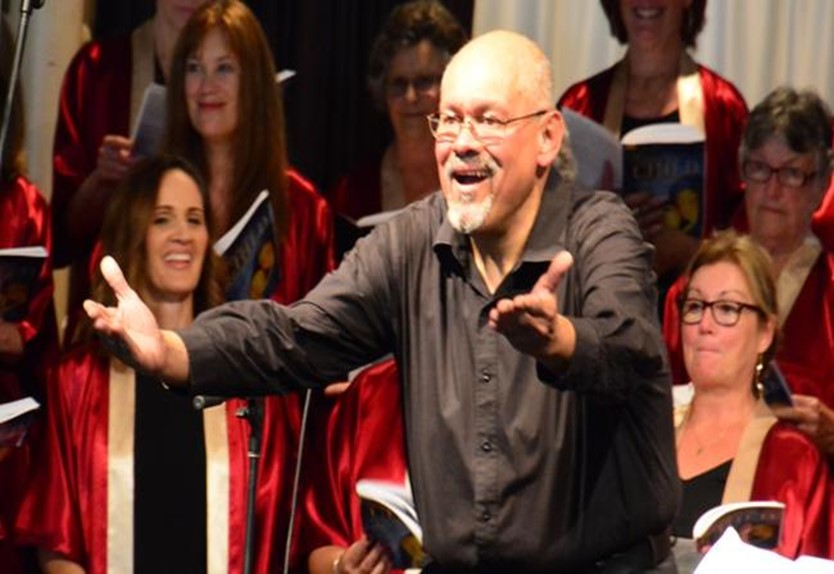
Sansoni, David Aldo, OAM, born 9th January 1953 in Mt. Lavinia, Sri Lanka. Educated at S’ Thomas’ College, Mount Lavinia 1960-1971, School Prefect and Rugby Colours man. Privileged to have sung in the College choir under the tutelage of Rev. Roy H. Bowyer-Yin, in 1961-62. Fifteen years in Shipping in Colombo. Active in the music and theatre scene. Immigrated to Sydney, Australia, in October 1987 with his family. Thirty years in Shipping in Sydney. Choral music aficionado – chiefly sacred/church music. Led a small combo, performing light Jazz and ‘easy-listening’ music in restaurants, for formal functions, weddings and birthdays. Director of the Choir and occasional
Orchestra of St Paul’s Church, Castle Hill, NSW. Actively involved in raising funds for charities, particularly Compassion Australia (Compassion International), mounting concerts, attracting audiences of 600 and more. This work led to a nomination for the Order of Australia Medal (OAM), which was awarded in 2018.
Dr. Pauline Gail Schokman
Born 9th February 1958 in Colombo. She is the daughter of Dr Eric Schokman & Vilma Joseph. Commenced primary education at Methodist Ladies College Colombo. Immigrated to Melbourne in 1965 aged 7 years. Secondary education at Methodist Ladies College Hawthorn. MB. BS. Melbourne University 1981, including a final year elective period at the Addenbrookes Hospital Cambridge UK and the Royal Infirmary Hospital Edinburgh Scotland. Dip RACOG 1984. Completed Training as Psychoanalytic Psychotherapist with the VAPP 2000. Worked as a volunteer with Professor Birute Galdikas in Kalimantan Tengah studying orangutans 1989. Worked as a volunteer on the Palaeontological Dig at Dinosaur Cove 1989-1993. GP, psychotherapist and novelist. Novels to date: The Other Side of Silence (Published 2016 London) and A Different Kind of Madness (Published 2019 London.

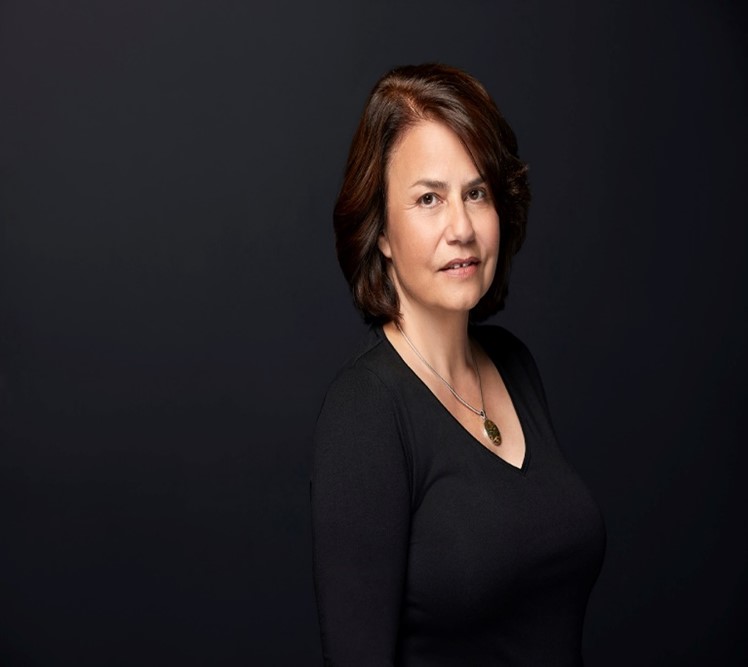
Charmaine Maureen Solomon

Solomon, Charmaine Maureen, OAM, (nee POULIER) born August 31, 1930, Colombo, Ceylon. She is the daughter of Melville Gordon Poulier and Kathleen Desmond. At age 18, she became the assistant to the Editor of the women’s page of the ‘Ceylon Daily News’. She interviewed royalty, film stars, movie directors, authors and covered social events. In 1956, she married Reuben Kelly Ezekiel Isaac Solomon. They immigrated to Sydney, Australia in 1959. They have 2 sons and 2 daughters. She taught herself to cook in part to calm her fears of being in an unfamiliar place while Reuben worked nights as a musician.. In 1964 she came second in the ‘Woman’s Day’ Butter White Wings Bake Off and attracted the attention of cookbook author Margaret Fulton, whom invited her to join “Woman’s Day’ as a food writer. She worked at the magazine for 11 years, including three as food editor. She then became the cookery editor of ‘Belle’ magazine. She was a regular columnist for “The Sun-Harald’ and ‘The Sydney Morning Herald’ and was the food editor of ‘Family Circle’ for three years. Her first book, the ‘South East Asian Cookbook’ was published in 1972 and ‘The Complete Asian Cookbook’ followed in 1976, it has sold over a million copies in five languages, and is regarded as one Australia’s most influential cookbooks. Over the next three decades she wrote 29 more books. She is also the creator of her own brand of spice blends and marinades. She is named in the ‘Who’s Who in Australia’. She was awarded the Medal of ‘The Order of Australia’ in 2007 for her service to food media, particularly as the author of Asian cookery books. Her ‘Encyclopedia of Asian Food’ won a silver medal in the 1996 Julia Child Cookbook Awards and a silver ladle in the 1997 World Food Medias Best Food Book Awards. The line of spice pastes and marinades she developed with husband Reuben won a Jaguar Award for Excellence in 1988 and she won Best Vegetarian Book in English for ‘The Complete Vegetarian Cookbook; in the 2002 Gourmand World Cookbook Wards.
William Benjamin (Bunny) Thiedeman
Born 1919. Educated at Royal College, Colombo. Was a member of the Royal College cricket team that toured Australia in 1936. Graduated from the University of Colombo in 1938. Joined the Police Force as an Inspector. In 1952 he joined the Mercedes-Benz Company in Sri Lanka and proceeded on a German Government Scholarship to Germany, where he obtained a Ph D in Science. In 1960 he obtained a position with the UN as a Consultant and was sent to Africa to supervise the Geophysical Year Survey in the North African region. He immigrated to Australia from Africa. He obtained a position as an Engineer with the State Electricity Commission, in Victoria. He moved to Canberra in 1964, where he obtained a position in the Patent Office and retired as Examiner of Patents in 1982. During his tenure with the Patent’s Office, he was sent to many Asian countries. He also represented Australia at various conferences and seminars.
Dr Rose Evangeline Toussaint
Born 15 March 1930, Colombo, Ceylon, died 20 May 1998, Perth, WA, daughter of Sidney Lorain Toussaint and Druzylle Analine Hester Ferdinands. She immigrated to Perth, Western Australia in 1947. Her Secondary education was at St Hilda’s Anglican Girls School, Mosman Park, WA. Her higher education was at the University of Western Australia. where she obtained her primary Medical degree, followed by Specialised Psychiatry at UWA before she became a Fellow of the Australian and New Zealand College of Psychiatrists. She had her Private Practice in Ventnor Avenue ,West Perth. She was a highly respected among her peers in her field of medicine and was also closely associated with the Anglican Church in WA to which she bequeathed a substantial collection of art works. She married Colin Harrold in 1957, they had 2 children.
Dr Darrel Felix Weinman
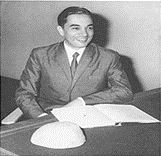
Born November 20, 1929, Colombo, Ceylon, died October 14, 2018, Sydney, Australia. Educated at St Peter’s College, Colombo, a brilliant student and School Captain. He was the school Cricket Captain. Studied medicine at the University of Ceylon, obtained FRCS with 1st Class Honours and won the Hallet Prize. 1960 in London qualifying for FRCS and MRCP. Returning to Ceylon in 1962, he was employed as Doctor at the General Hospital, Colombo and later as Neurosurgeon. He immigrated to Sydney in 1974. Australia, Employed as Neurosurgeon at Canterbury & Bankstown Hospital, Sydney. Later on he went into General Practice with his wife, Brinda also a Surgeon.
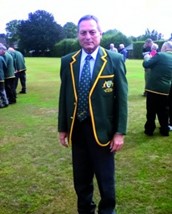
David Ian Willé
Born 1942, educated at Royal College, Colombo. Emigrated with his parents to Melbourne, Australia in 1957. Studied at Melbourne University, obtaining a BA and LLB. Appointed to the Australian Diplomatic Service and posted as Australian High Commissioner to the West Indies, on his return was appointed Head of the Russian desk at the Department of Foreign Affairs, Canberra.
Main source Victor Melder Sri Lanka Library
Hugh de Kretser – Australian Human Rights Commission
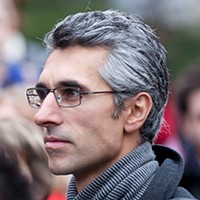
In May 2024 Hugh de Kretser was appointed as the next President of the Australian Human Rights Commission (AHRC). His father’s family are Dutch Burgher Sri Lankans.
The AHRC plays a vital role in promoting and protecting human rights in Australia, ensuring that all Australians are treated with dignity and are free from discrimination. The President of the AHRC is responsible for leading the Commission’s efforts and managing its administrative affairs.
Mr. de Kretser brings a wealth of experience to the role, currently serving as the Chief Executive Officer of the Yoorrook Justice Commission. His previous positions include Executive Director at the Human Rights Law Centre and Executive Officer at the Federation of Community Legal Centres (Victoria) Inc. Additionally, he has served as a Commissioner of the Victorian Law Reform Commission and a Director of the Sentencing Advisory Council. His extensive board experience includes roles with Flourish Australia, the International Network of Civil Liberties Organizations, the National Association of Community Legal Centres, and the Human Rights Law Centre.
Professor Justin La Brooy
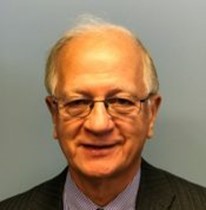
Professor Dr Justin La Brooy is an internationally recognised specialist in adult infectious diseases. He is skilled in the care of TB, Heb B, Hep C and others. The care of Hep C has become quite exciting with the availability of treatments which are curing a large majority of carriers with that illness.
He has international experience with a career spanning over 45 years and has contributed immensely to the medical profession. From lecturing at universities around Australia, to holding senior positions in medical institutions around the world, Professor La Brooy is on the leading edge of medicine. He has contributed to a plethora of medical journals and has been involved in many research projects over the last three decades.
Credentials: MBBS, MRCP, MRACP, FRACP, MD, FRCP in Infectious Diseases & General Medicine.
- Specialization: Expert in adult infectious diseases, including TB, Hepatitis B & C, with extensive experience spanning over 45 years.
- Contributions: Held senior academic and clinical positions globally, contributed to numerous medical journals, and led significant research projects.
- Appointments: Served at major institutions like the University of Adelaide and Townsville Hospital, and held leadership roles in infectious diseases.
- Committees: Involved in various health, university, and national committees, playing a key role in medical education and public health.
- Publications: Authored and co-authored numerous research papers on infectious diseases, particularly on conditions like melioidosis, dengue, and Helicobacter pylori.
Roosmalecocq family
The Roosmalecocq family – like other Dutch Burgher families – emigrated from Ceylon because of the discriminatory policies imposed on minority ethnic communities by the Govt. of Ceylon. These policies placed minority communities – such as the Tamils and the Dutch Burghers – at a severe disadvantage. For instance, Sinhalese became the sole official language of Ceylon. This meant that education, both at school and University, would be available only in Sinhala, and employment in the public service and the professions could be obtained only by people fluent in Sinhala. As Dutch Burghers are English-speakers with only a slight knowledge of Sinhala, they were disadvantaged in education, employment and long-term career prospects.
Moreover, they were also disadvantaged in appearance: many Dutch Burghers did not ‘look Asian.’ They were often pale-skinned, sometimes blond and blue-eyed. This counted against them in a society preoccupied with Sinhala racial and cultural heritage.
As Mr Roosmalecocq comments: ‘…future employment prospects looked bleak.’ At aged seventeen, he migrated on his own to Australia and ‘ended up in Brisbane where [his] relatives had already established themselves.’
This was the situation all Dutch Burghers faced. Their appearance, Christian faith, Western traditions and cultural heritage, placed them at a permanent disadvantage in their homeland. Consequently, they left the homeland they loved, and emigrated.
The information about the Roosmalecocq family was contributed by Mr Michael Roosmalecocq.
Paulusz Family
Text to follow
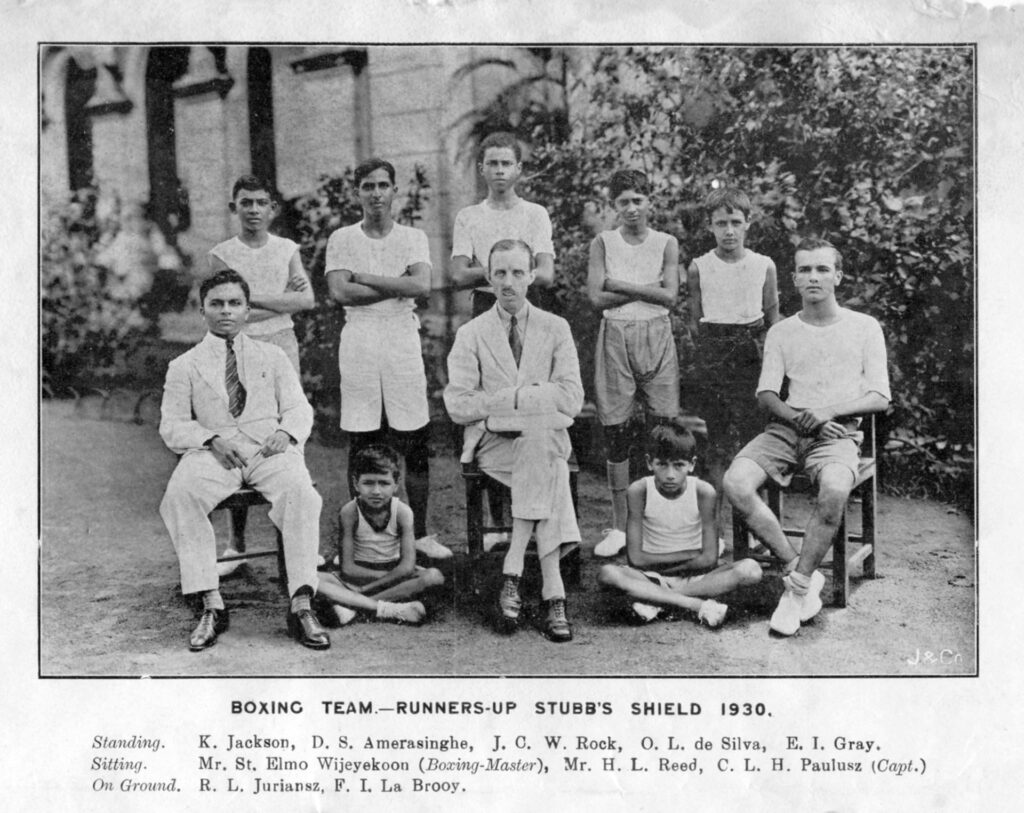

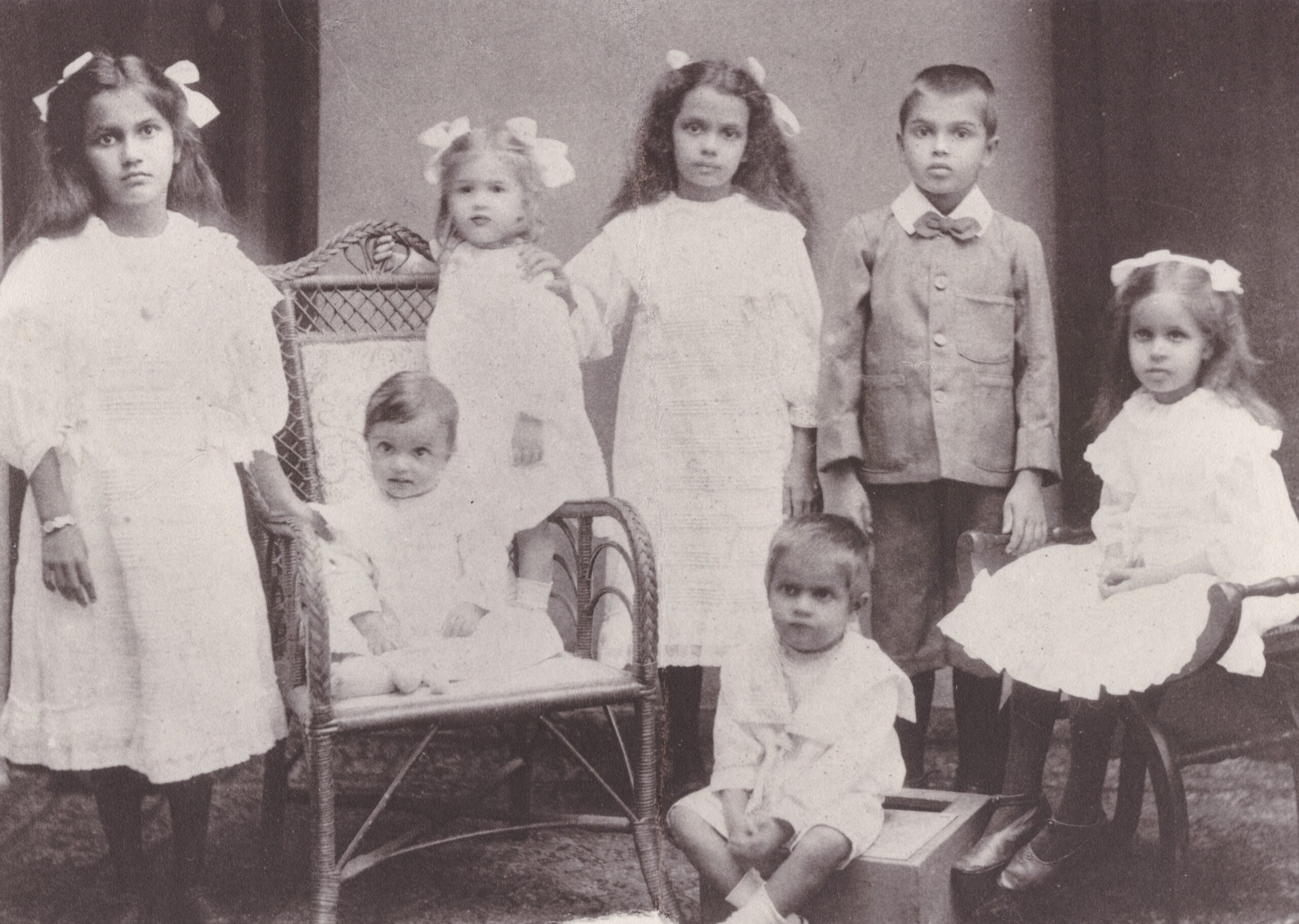
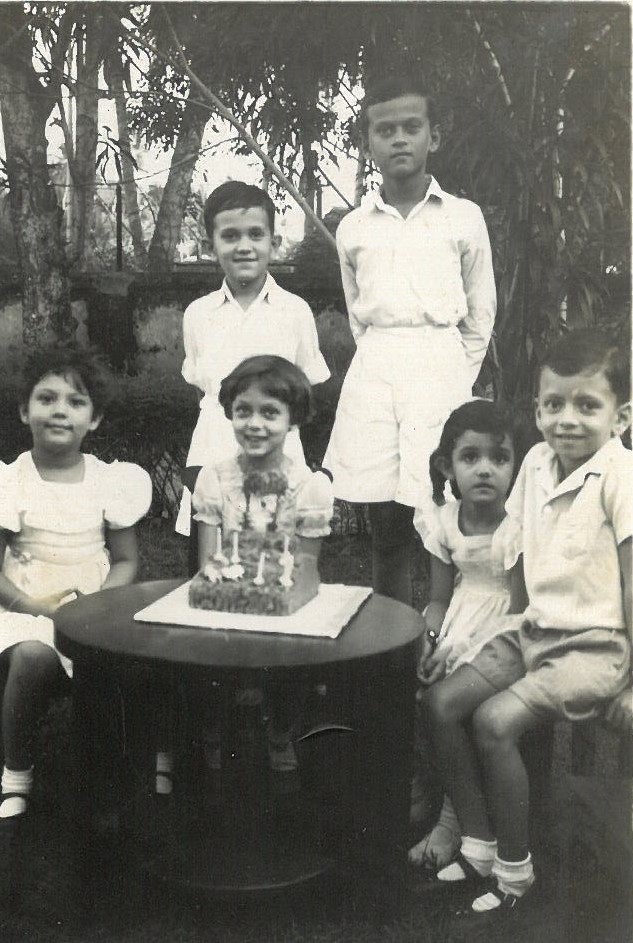
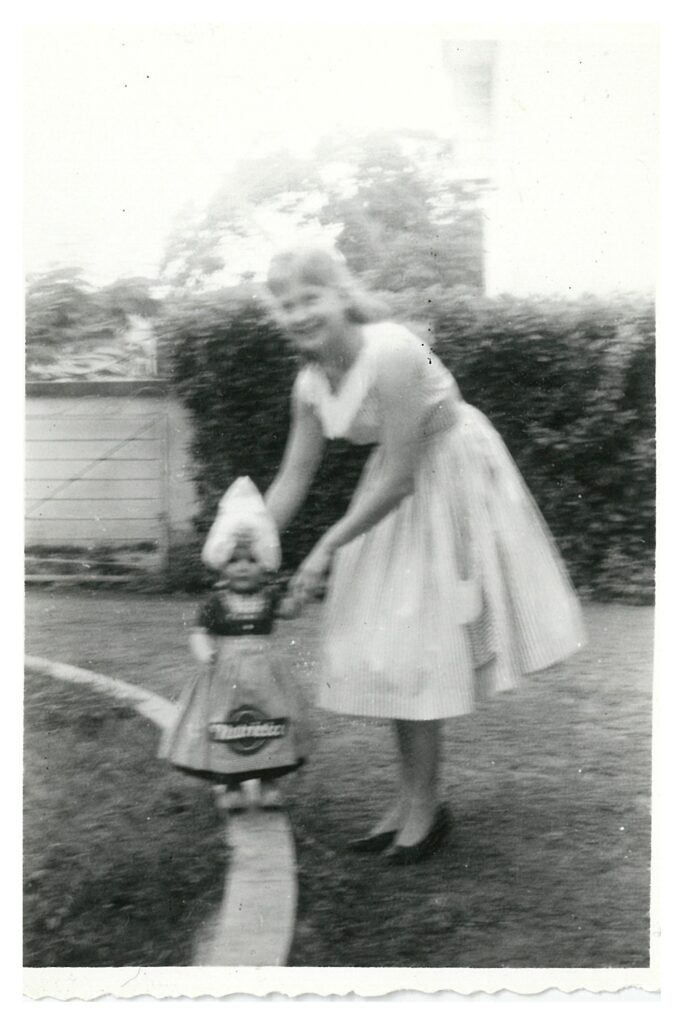
The doll, Nutricia, was an advertisement for the dairy products, and travelled with an exhibition of the products. After the Exhibition was over, Yvette was given the doll as a gift.
Nutricia’s name is stitched on her apron. Yvette renamed her ‘Juliana.’ On the photo het sister Moira holds the doll;
Moira Paulusz
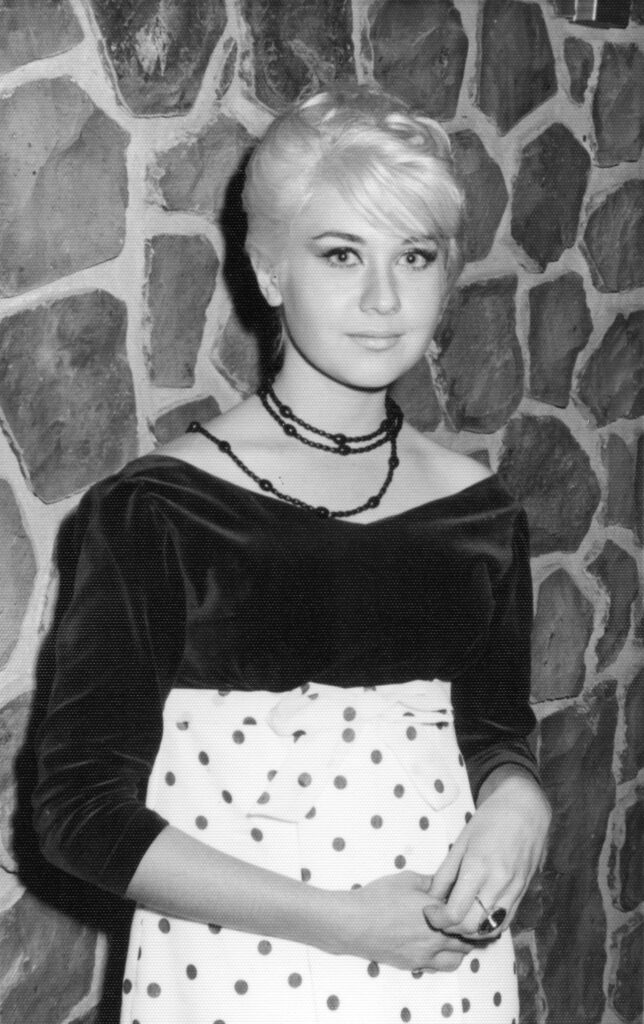
Moira Paulusz was born in Colombo, Ceylon (Sri Lanka). Moira was a Dutch Burgher, the daughter of Casparus and Kathleen Paulusz. From an early age, Moira showed she was artistically gifted: she could draw, as well as dance and act, and had a strong talent especially for Classical ballet.
Moira’s career in journalism began when she edited the Mary White College magazine at University in Australia. It was this work which enabled her to obtain employment in the highly competitive journalistic field overseas.
Moira was very interested in both fashion and journalism, and combined these concerns in her professional life. She became Features Editor of a fashion journal, Hairdressers Journal and, later, its Deputy Editor, ‘….pioneering the magazine’s editorial content… Moira was a phenomenal journalist and her dedication, vision, loyalty and creativity ensured HJ was always first with the fashion, news and views that shaped this industry.’ [Hairdressers Journal, 6th June 2011]
Moira was awarded a Bachelor of Arts degree in English, in Australia, as well as journalist qualifications, obtained in the UK.
Comments regarding Moira’s career as a journalist were extracted from this website.
Dr. Hans Van der Wall, PhD, FRACP

Dr Van der Wall is Professor of Medicine at Notre Dame University in Sydney. He trained at the Prince of Wales Adult and Children’s Hospitals and has been a Nuclear Medicine specialist for nearly 30 years. On completion of his PhD at the University of NSW he took up the position of Director of Nuclear Medicine at Concord Hospital. He is now in full-time private practice.
Dr Van der Wall has supervised 9 PhD students and published over 150 scientific papers in the refereed literature. He has co-authored chapters in 8 textbooks of Nuclear Medicine and is a section Editor of the Musculoskeletal Section of the current reference text of Nuclear Medicine (Ell & Gambhir). Dr Van der Wall has been the invited speaker at over 70 international and local meetings including the Society of Nuclear Medicine annual meetings in the US and Europe, World Congress on Low Back Pain and the European Thoracic Society Meeting.
Main research interests are in gastroesophageal reflux testing and the diagnosis of lateralising lower back pain. He has developed and patented tests in both areas and is the only practice in the country offering these tests. The research has been validated against the accepted reference standards in both areas. He has a strong interest in musculoskeletal disease and has published widely in the area with both rheumatology and sports medicine physicians such as Prof S. Kannangara, Pro M. Cusi and Dr Jeni Saunders. He has strong research connections with Prof Greg Falk from Sydney University, an upper gastrointestinal surgeon.
Dr Harold van der Wall and Mrs Irene van der Wall
Dr Harold Melchors van der Wall (1911-c. 1972) was an Ear Nose and Throat (ENT) specialist. He was a Senior Lecturer in the Medical Faculty at Ibadan University in Nigeria, and was subsequently employed as an ENT specialist for the South East Asian Division of the World Health Organization (WHO). Dr van der Wall retired from WHO in 1965, and continued to practise as a doctor in Sydney, NSW. He passed away in 1972.
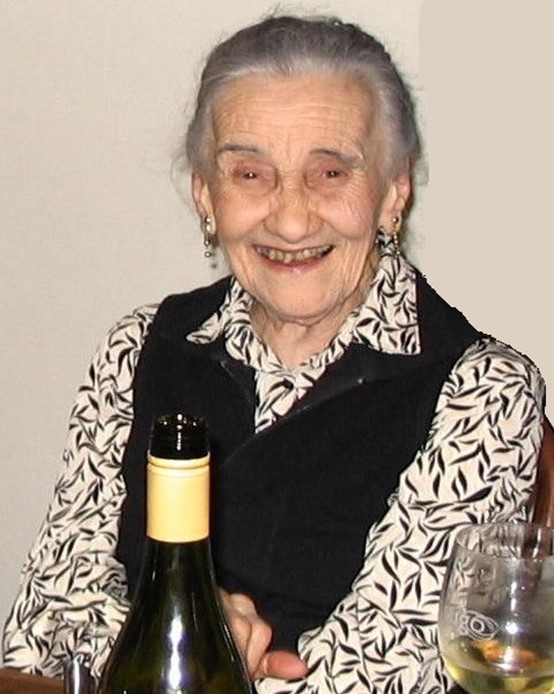
Mrs Irene van der Wall, was the wife of Dr Harold van der Wall. She held a Licentiate in Music, in the performance stream, from the Royal Academy of Music. She taught the piano in Ceylon and Australia. Her students included Mr Rohan de Saram, an internationally renowned cellist. At a Royal Command Performance in London, Mr de Saram commented: ‘My special thanks to Mrs Irene van der Wall…’
A Licentiate of Music from the Royal Academy of Music is equivalent to a Master’s degree in Music.
.
Aubrey Collette
Dutch Burger, cartoonist and art teacher Aubrey Collette was born in Colombo, Ceylon (Sri Lanka). He worked as an art teacher at the Royal College, then as a political cartoonist on the Ceylon Times and Observer for fifteen years before coming to Australia in 1961. He left his homeland because he could not carry on safely his vocation as political satirist and cartoonist, in Sri Lanka.
He drew illustrations for the Victorian Education Department for three years, then became a political cartoonist on the Australian , including cartoons about Aboriginal rights in 1965 (ill. King, 176-8, 186, 214 et al.); original Collette cartoon c.1966 is in ML PXD 764. In 1970 he won the Walkley Award for best cartoonist of the year.
He joined the Melbourne Herald in 1971, e.g. ‘Working Wives’ 15 July 1974 (included by Christine Dixon, original NLA?). His cartoons also appeared in the New York Times , the Saturday Evening Times and the Sydney Bulletin , e.g. painter standing on canvas spilling paint, to viewer inspecting photo of Spoerri-type painting on wall: “Yes, it’s not bad, considering that at that time they were still using brushes” 1964 (ill. Rolfe, 307). Honorary member of the Cartoonists’ Society of America. His son Adrian, was the general manager of Opera Australia. His daughter Cresside is a well known tapestry artist.
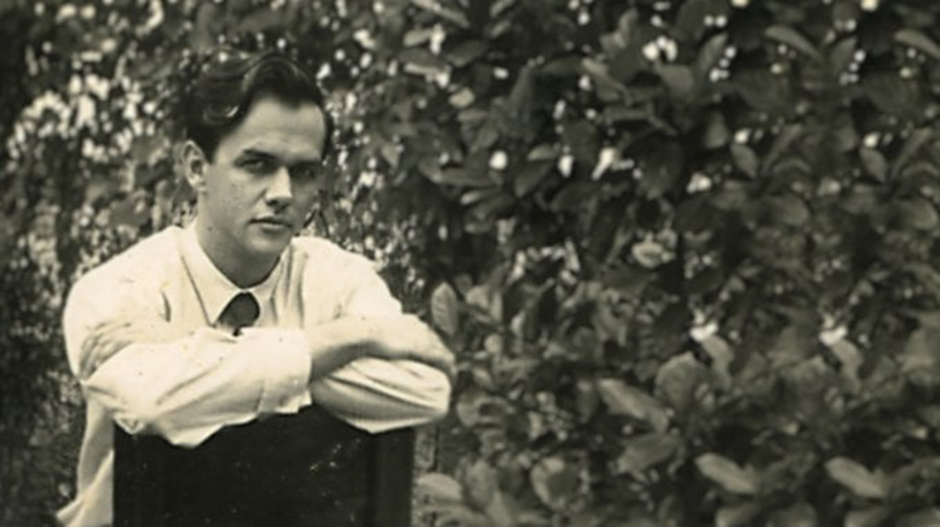

Background information on the VOC era in Ceylon and the history of the Dutch Burghers
A brief video presentation by a historian, Dr Careem, about the VOC era and – especially – about the Dutch Burghers.
This link is to the Dutch Museum in Colombo. It includes some interesting photographs of Dutch furniture of the Seventeenth and Eighteenth centuries.

